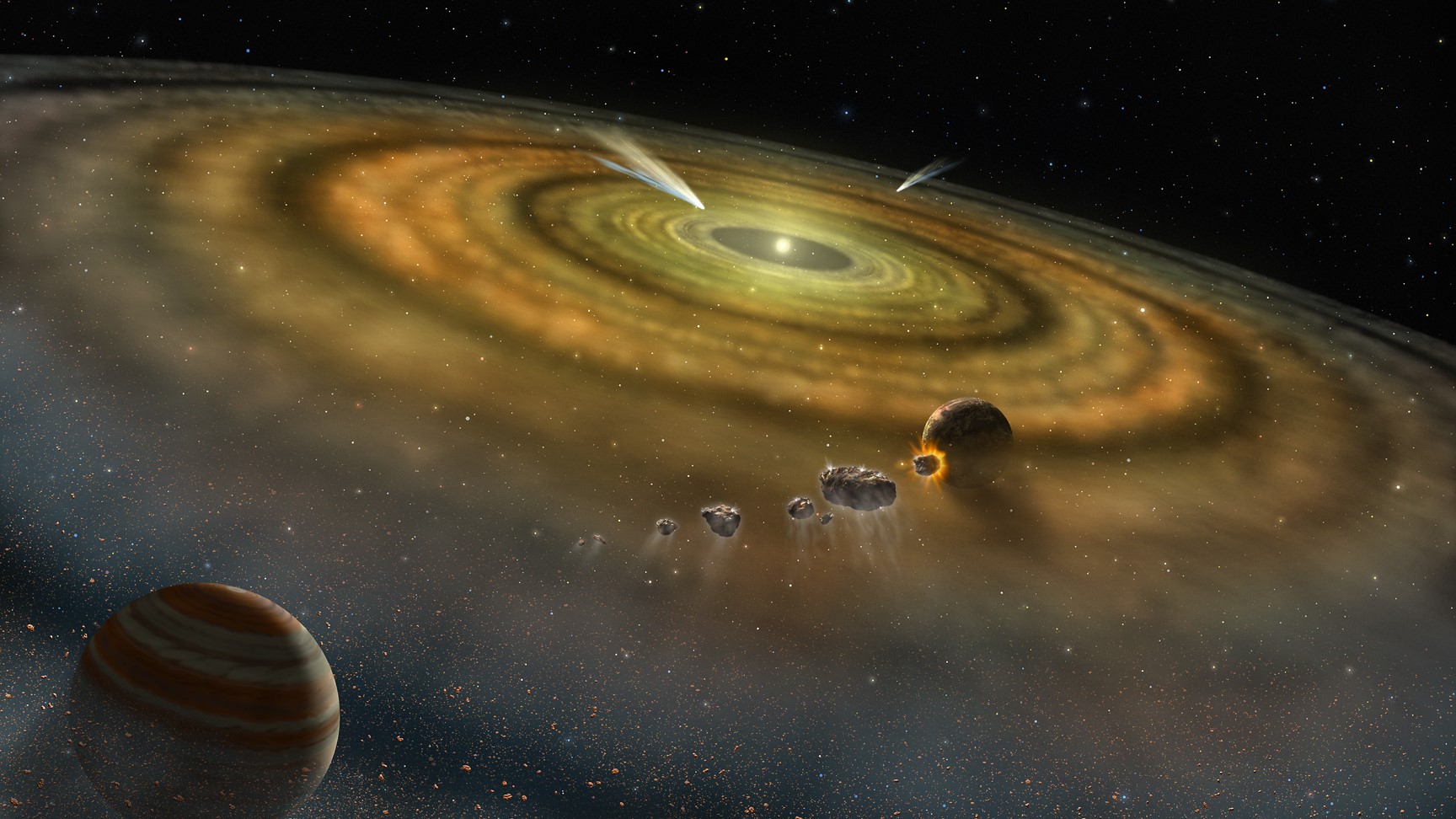Mars meteorite challenges leading theory of how the Red Planet formed
Meteorites delivered volatiles to Mars much earlier than scientists thought.

A new analysis of a Martian meteorite is challenging current thinking about how terrestrial planets acquired volatile elements, including the elemental ingredients of life, early in their formation.
Researchers analyzed the Chassigny meteorite, which fell to Earth in 1815 and is thought to be a sample from the deep interior of Mars and thus providing a window into the early days of the solar system.
The main hypothesis for the formation of rocky planets such as Earth is that they initially acquired volatiles — such as water and elements which vaporize at low temperatures — from the solar nebula, the swirling disk of material around the young sun. These volatiles dissolved into the fiery magma oceans of young planets but later outgassed into their atmospheres. Further volatiles were delivered later on, when chondritic meteorites — primitive, rocky asteroids formed from dust and grain in the early solar system — smashed into the planets, according to that hypothesis.
Related: Iron meteorites point to millions of years of chaos in early solar system
But the new research suggests that Mars' development may have been different.
Sandrine Péron, a postdoctoral fellow at ETH Zürich in Switzerland, and Sujoy Mukhopadhyay, a professor at the University of California, Davis, made extremely careful measurements of the minute quantities of the isotopes of krypton, a noble gas, in samples of the meteorite at the UC Davis Noble Gas Laboratory. They were able to deduce the origins of elements in the rock.
The pair found krypton isotope ratios indicating volatiles originating from chondritic sources instead of those associated with the solar nebula. This finding suggests that volatiles from meteorites were incorporated into the mantle of the Red Planet much earlier than scientists previously thought, while the nebula was still present.
Get the Space.com Newsletter
Breaking space news, the latest updates on rocket launches, skywatching events and more!
Notably, Mars is thought to have cooled much faster than Earth, taking around 4 million years to solidify, compared with 50 million to 100 million years for our planet. This means the Red Planet is offering earlier insight into the history of volatiles in the solar system.
"The Martian interior composition for krypton is nearly purely chondritic, but the atmosphere is solar," Péron said in a statement. "It's very distinct."
The observations "contradict the common hypothesis that, during planet formation, chondritic volatile delivery occurred after solar gas acquisition," while also posing questions about the formation of planetary atmospheres, the researchers wrote in a study describing the new work.
The research was published June 16 in the journal Science.
Follow us on Twitter @Spacedotcom and on Facebook.
Join our Space Forums to keep talking space on the latest missions, night sky and more! And if you have a news tip, correction or comment, let us know at: community@space.com.

Andrew is a freelance space journalist with a focus on reporting on China's rapidly growing space sector. He began writing for Space.com in 2019 and writes for SpaceNews, IEEE Spectrum, National Geographic, Sky & Telescope, New Scientist and others. Andrew first caught the space bug when, as a youngster, he saw Voyager images of other worlds in our solar system for the first time. Away from space, Andrew enjoys trail running in the forests of Finland. You can follow him on Twitter @AJ_FI.









